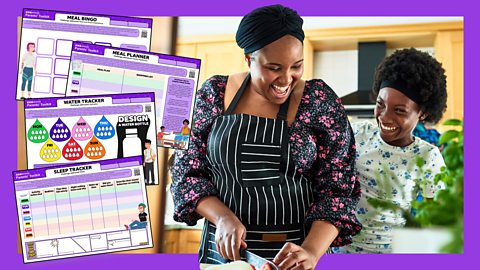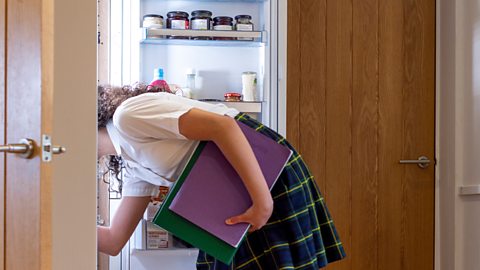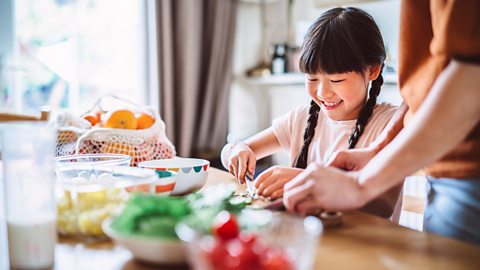Sugar is a ÔÇÿcarbÔÇÖ or carbohydrate, and itÔÇÖs found in lots of different foods and drinks. Achieving a balanced sugar intake for kids involves moderating their consumption of sugary foods and beverages while ensuring they get the necessary nutrients for growth and development.
What are the different sugars?
There are three main types of sugar in our diet: sucrose, fructose, and lactose. Sucrose is what we all know as regular sugar or table sugar and is probably what you think of when we talk about sugar. Fructose is the sugar found in fruit and lactose is the sugar in milk and other dairy foods such as plain yoghurt and cheese.
The sugars found in dairy products and fruits are known as intrinsic sugars and are the sugars found naturally in foods. We donÔÇÖt need to worry about these types of sugar (natural lactose and fructose).
Should I stop my child from eating sugar?
ItÔÇÖs not helpful to ban foods. Children rebel against this and want them more. Completely avoiding sugar is impractical in today's food society where sugar is prevalent. By taking a balanced approach, you can help your child develop a positive relationship with food, understand moderation, and make nutritious choices without feeling deprived, restricted or even guilty.
What high sugar foods should I try to avoid?
The sugars that we do need to watch out for are called ÔÇÿfree sugarsÔÇÖ. These are sugars added to foods and drinks such as cakes, biscuits and desserts, as well as some soft drinks such as sugary fizzy drinks, energy drinks and some squash.
Free sugars also include the sugar found in unsweetened fruit juices and fruit smoothies. This can be confusing as you may think of them as natural sugars and therefore fine. However, due to the manufacturing process to make the juices and smoothies, sugar is released from the cells of the fruit making them ÔÇÿfreeÔÇÖ. When you eat whole fruits, the sugar remains inside the cells.
Fruit juices and smoothies do however contain some useful vitamins and minerals and so a small portion of 150mls a day, which is equivalent to a small glass is perfectly fine and part of a healthy balanced diet.
A diet with lots of free sugars eaten frequently throughout the day increases the risk of dental decay and diabetes. It can also lead to excessive weight gain as more energy is consumed than your body needs.
As a guide, we should be aiming to have no more than the following daily amounts of free sugars:
| 4 ÔÇô 6 years | 19g |
| 7 ÔÇô 10 years | 24g |
| 11 years and above | 30g |
Are sugary drinks bad for my child?

As well as food swaps, think about swapping sugary drinks for healthier options like water or very diluted no-added-sugar squash.
Sugar in drinks hits the bloodstream quickly which can cause a fast increase and drop in blood sugar levels, causing moods to dip. This spike can also leave them hungry again and they might end up eating more than they need.
Some sugary drinks also contain caffeine. They can disrupt sleep, cause headaches and even stomach aches in children.
Sugary drinks include:
- Fizzy drinks.
- Sweet milk drinks.
- Juice drinks.
- Energy drinks.
- Sweetened squash (without 'no added sugar' in label).
- Sweetened plant milks.
- Tea or coffee with added sugar.
- Fruit juices and smoothies (no more than 150ml a day).
ChildrenÔÇÖs teeth are precious. If they have tooth decay and damage to their milk teeth, this can affect their adult teeth.

How do we work out the sugar content in foods and drinks?
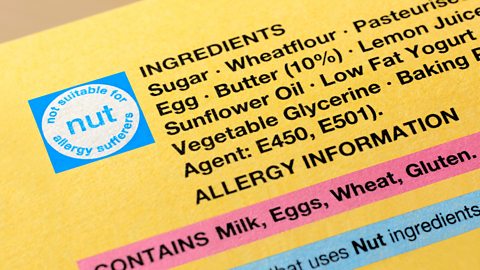
Have a look at a food label and find the ingredients list read more about (understanding food labels). If sugar is one of the first few named ingredients, then it will be high in sugar. Or look at the nutrition information on the food packet and find the word carbohydrate and then per 100g (or per 100mls for liquids). Under this it will say ÔÇÿof which sugarsÔÇÖ and this is the amount of carbohydrate present as sugar in the food. This figure is for all the sugars so it will include free and intrinsic sugars, but it is a good way of working out if it is high in sugar or not and there are some foods you know will be high in sugar such as cakes, biscuits, chocolate, and fizzy soft drinks.
Foods with a high sugar content will have more than 22.5g sugar per 100g and low less than 5g sugar per 100g. A high sugar drink contains more than 11.25g sugar per 100mls and a low sugar drink less than 2.5g.
Sugary drinks are thought to be one of the biggest sources of free sugars in our diets. The Government is trying to reduce our intake by including a tax on sugary drinks, and working with the food industry to reduce the sugar content in them. You may have noticed price differences with regular and diet drinks that reflect this extra tax on sugary drinks.

What are some simple sugar swaps?
Try these sugar swaps for snacks and drinks:
- Flavoured yoghurt: Swap for plain full fat Greek yoghurt with added fresh or frozen berries and a teaspoon of honey or maple syrup.
- Ice cream: Swap for a homemade milkshake made with a portion of fruit, milk and Greek yogurt. Or freeze chopped banana then blitz in a food processor. You could also place a handful of berries through a sieve and mix with equal quantities of Greek yoghurt - whisk and freeze.
- Biscuits and cakes: Swap for homemade energy balls, flapjacks, fruit or vegetable muffins or homemade granola bars or oat cookies.
- Chocolate: Swap for mini or fun sizes and serve alongside some favourite fruit or a handful of wholegrain breakfast cereal, or mix a handful of popcorn with a small handful of chocolate chips.
5 top tips to help parents cut down on their childÔÇÖs sugar intake
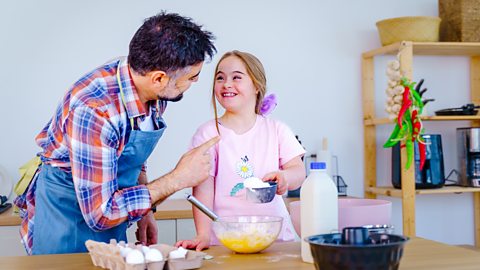
- Think about how many sugary drinks the family consumes and the portion of fruit juice that is served. One portion is 125-150mls. Try and have more water and milk and eat whole fruit.
- Try and have more fruit and vegetables as snacks ÔÇô such as carrot and cucumber sticks, pineapple or apple slices. See more healthy snack suggestions.
- Try and cook at home rather than eating out so you have more control over the sugar content.
- Mix up your breakfast cereal to include those with less sugar and think about having some fruit with your cereal.
- Get prepared when you go out and take snacks and drinks with you so that youÔÇÖre not caught out with hungry kids. This is cheaper too!

How can I show my child what sugar does to our teeth?
You can try the following experiment with your kids so they can understand why youÔÇÖre trying to reduce their sugar intake.
YouÔÇÖll need:
- Hard-boiled eggs (in their shells).
- Various sugary drinks (such as fizzy drinks, soda, juice, etc.)
- Water.
- Clear containers.
- Toothbrushes and toothpaste.
What to do:
- Place each hard-boiled egg in a separate container filled with different sugary drinks and one with water.
- Let the eggs sit for a few days.
- Remove the eggs and observe any changes to the eggshells.
- Use toothbrushes and toothpaste to try and clean the eggs.
- Discuss how sugary drinks can affect teeth and the importance of brushing.
Dr Chris van Tulleken takes a personal view on ultra-processed foods and how they've come to dominate food culture in his documentary Irresistible: Why we can't stop eating - available to watch on ┤¾¤¾┤½├¢ Two and iPlayer.

Parents' Toolkit
Fun activities, real-life stories, wellbeing support and loads of helpful advice - we're here for you and your child.
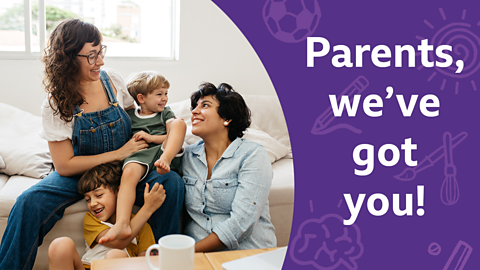
Happy Family Eating... a fun guide for parents
An overview of our detailed resources and guides to helping your child enjoy and understand their food
